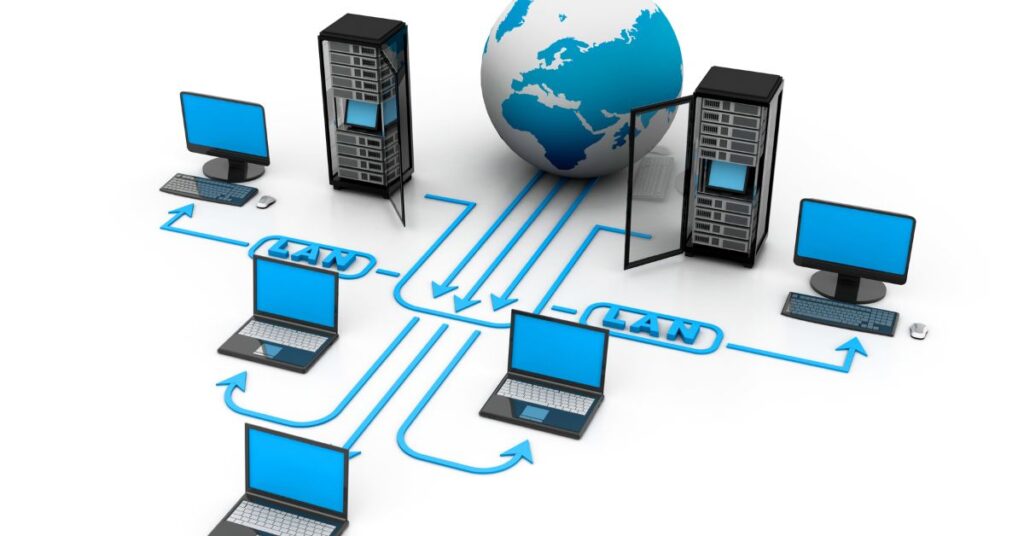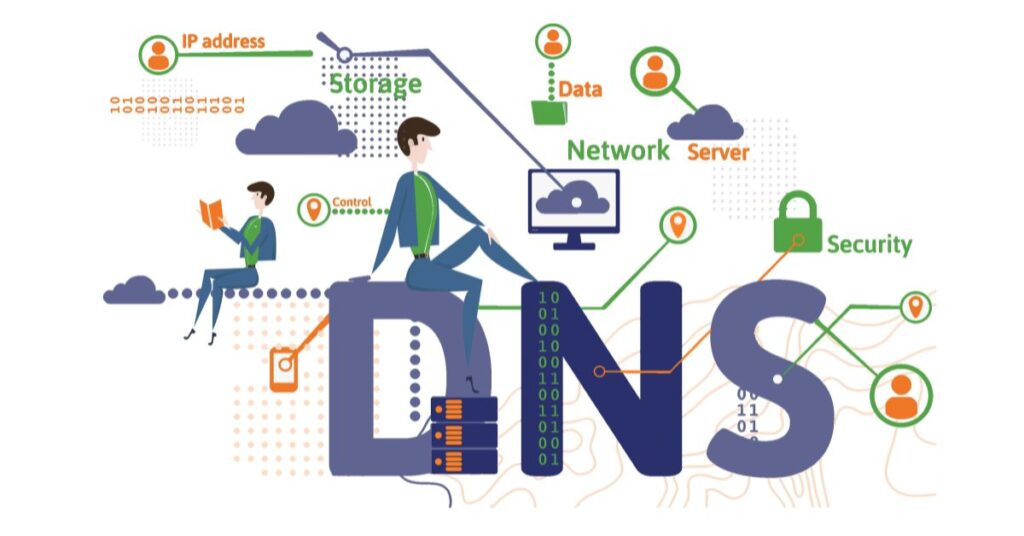127.0.0.1:49342 refers to a local network address and port number used for testing or accessing services on your own computer.
Ever wondered about those mysterious numbers you see in your computer’s network settings? Let’s unravel the secret behind 127.0.0.1:49342 and explore the world of localhost. This guide will demystify these technical terms and show you how they play a crucial role in your computer’s networking.
127.0.0.1:49342 is more than just a random string of numbers and dots. It’s a special address used by your computer to talk to itself, with the number after the colon (49342) representing a specific communication channel or “port”. Understanding this concept can help you troubleshoot network issues and even set up your own web servers.
Understanding IP Addresses
In the vast landscape of computer networking, IP addresses serve as the fundamental building blocks that enable communication between devices. Before we delve into the specifics of 127.0.0.1:49342, it’s crucial to understand the basics of IP addressing.
What is an IP Address?
An IP (Internet Protocol) address is a unique numerical identifier assigned to each device connected to a computer network that uses the Internet Protocol for communication. It serves two main functions:
- Host or network interface identification
- Location addressing
IP addresses come in two versions: IPv4 and IPv6. For the purpose of this guide, we’ll focus on IPv4, which is still widely used and relevant to our discussion of 127.0.0.1.
IPv4 Address Structure
An IPv4 address consists of four octets, each represented by a number between 0 and 255, separated by periods. For example:
192.168.1.1
Each octet is 8 bits, making the total length of an IPv4 address 32 bits. This format allows for approximately 4.3 billion unique addresses, although certain ranges are reserved for specific purposes.
Special IP Addresses
Within the IPv4 addressing scheme, certain addresses and ranges are reserved for special purposes. These include:
- Private IP ranges (e.g., 192.168.0.0 to 192.168.255.255)
- Loopback addresses (127.0.0.0 to 127.255.255.255)
- Multicast addresses (224.0.0.0 to 239.255.255.255)
Of particular interest to our topic is the loopback address range, specifically 127.0.0.1, which plays a crucial role in localhost operations.
Deciphering 127.0.0.1:49342
Now that we have a foundation in IP addressing, let’s break down the specific address 127.0.0.1:49342 and understand its components and significance.
The Loopback Address: 127.0.0.1
127.0.0.1 is known as the loopback address. It’s a special IP address that’s used to establish a network connection to the same device. When a program connects to 127.0.0.1, it’s connecting to the local machine itself.
Key points about 127.0.0.1:
- It’s part of the reserved loopback range (127.0.0.0 to 127.255.255.255)
- It’s often referred to as “localhost”
- Traffic sent to this address never leaves the device
- It’s used for testing network services without affecting external networks
The Colon (:) Separator
In the address 127.0.0.1:49342, the colon serves as a separator between the IP address and the port number. This notation is commonly used in networking to specify both the destination address and the specific service or application on that address.
Significance of Port 49342

The number after the colon in our address, 49342, represents a port number. Understanding ports is crucial for grasping the full picture of network communications.
What are Ports?
Ports are virtual points where network connections start and end. They’re used by the TCP (Transmission Control Protocol) and UDP (User Datagram Protocol) to distinguish between different services or processes on the same IP address.
Key points about ports:
- There are 65,535 available ports
- Ports 0-1023 are well-known ports reserved for specific services
- Ports 1024-49151 are registered ports
- Ports 49152-65535 are dynamic or private ports
Dynamic Port Assignment
The port number 49342 falls within the dynamic port range. These ports are typically assigned automatically by the operating system or applications for temporary use. Some key aspects of dynamic ports:
- They’re used for client-side endpoints in network communications
- The exact number can change each time a connection is established
- They allow multiple applications to communicate simultaneously on the same device
Practical Implications
When you see an address like 127.0.0.1:49342, it typically indicates:
- A local process is running on your machine
- It’s listening on port 49342
- This could be a development server, a database, or any other locally hosted service
Setting Up Localhost Operations
Understanding how to set up and use localhost operations can be invaluable for developers, network administrators, and anyone interested in web technologies. Let’s explore how to leverage 127.0.0.1 for various purposes.
Setting Up a Local Web Server
One of the most common uses of localhost is for testing web applications. Here’s a simple way to set up a basic HTTP server using Python:
- Open a terminal or command prompt
- Navigate to the directory containing your web files
- Run the following command:
Copy
python -m http.server 8000
- Open a web browser and go to http://127.0.0.1:8000
This will serve the files in your current directory on port 8000.
Using Localhost for Database Testing
Many database systems, like MySQL or PostgreSQL, can be configured to listen on localhost for development purposes. For example, to connect to a local MySQL server, you might use:
Copy
mysql -h 127.0.0.1 -u username -p
This allows you to interact with your database without exposing it to external networks.
Configuring Network Services
When setting up network services like FTP servers or game servers, you can often configure them to listen on localhost for testing purposes. This allows you to verify functionality before exposing the service to the wider network.

Security Implications of 127.0.0.1:49342
While localhost operations are generally considered secure, there are still some security considerations to keep in mind when working with 127.0.0.1 and dynamic ports.
Read this blog:Unleashing Wordle: Tom’s Guide Hints, Strategies, and Daily Updates
Isolation from External Networks
One of the primary security benefits of localhost is its isolation from external networks. Traffic sent to 127.0.0.1 never leaves your device, making it inherently more secure than communications over a network.
However, this isolation is not absolute. Malware or compromised applications running on your system could potentially interact with services listening on localhost.
Port Scanning and Service Discovery
While external attackers can’t directly access your localhost, malware on your system could perform port scans on 127.0.0.1 to discover running services. It’s important to:
- Only run necessary services
- Use firewalls to control which applications can bind to ports
- Keep all software up-to-date to prevent exploitation of known vulnerabilities
Secure Coding Practices
When developing applications that listen on localhost, it’s crucial to implement proper security measures:
- Use authentication for sensitive operations
- Validate and sanitize all input, even from localhost sources
- Avoid hardcoding credentials in your application
Network Configuration
In some network configurations, it’s possible to route traffic to the loopback address. While this is not common, it’s important to be aware of your network setup and ensure that localhost services are not inadvertently exposed.
Troubleshooting Common Issues
When working with localhost and dynamic ports, you may encounter various issues. Here are some common problems and their solutions:
Port Already in Use
If you try to start a service and get an error that the port is already in use, you can:
- Use a different port
- Identify and stop the process using the current port
- Wait for the operating system to release the port (usually after a short time)
To find which process is using a port on Windows:
Copy
netstat -ano | findstr :49342
On Linux or macOS:
Copy
lsof -i :49342
Unable to Connect to Localhost
If you’re unable to connect to a service on localhost:
- Verify the service is running
- Check if a firewall is blocking the connection
- Ensure you’re using the correct port number
- Try using the IP address (127.0.0.1) instead of “localhost”
Slow Localhost Connections
If connections to localhost are unusually slow:
- Check your hosts file for incorrect entries
- Verify that your loopback interface is properly configured
- Scan for malware that might be intercepting localhost traffic
DNS Resolution Issues

If you’re having trouble resolving “localhost” to 127.0.0.1:
- Check your hosts file (usually located at C:\Windows\System32\drivers\etc\hosts on Windows or /etc/hosts on Linux/macOS)
- Flush your DNS cache
- Ensure your DNS settings are correct
FAQ’s
What is the difference between 127.0.0.1 and localhost?
127.0.0.1 is the IP address, while “localhost” is the hostname that typically resolves to this address. They are often used interchangeably but can be configured differently.
Can I use any port number with 127.0.0.1?
Yes, you can use any port from 0 to 65535, but it’s best to avoid well-known ports (0-1023) unless you’re running a specific service that requires them.
Is 127.0.0.1:49342 accessible from other devices?
No, 127.0.0.1 is only accessible from the local machine. Other devices cannot connect to your localhost address.
How can I make my localhost service available over the network?
To make a service available over the network, configure it to listen on your machine’s network IP address (e.g., 192.168.1.100) instead of 127.0.0.1.
Are communications to 127.0.0.1 encrypted?
By default, communications to 127.0.0.1 are not encrypted. However, you can implement encryption (e.g., HTTPS) for localhost services if needed.
Conclusion
Understanding 127.0.0.1:49342 and the concepts of localhost and dynamic ports is crucial for anyone working with network applications or web development. This knowledge forms the foundation for local testing, development, and troubleshooting of network services.
Key takeaways from this guide include:
- The significance of the loopback address 127.0.0.1
- The role of dynamic ports in network communications
- How to set up and use localhost for various purposes
- Security considerations when working with localhost
- Troubleshooting techniques for common localhost issues
By mastering these concepts, you’ll be better equipped to develop, test, and manage network applications efficiently and securely. Remember that while localhost provides a safe environment for testing, it’s essential to consider security implications when transitioning to production environments.